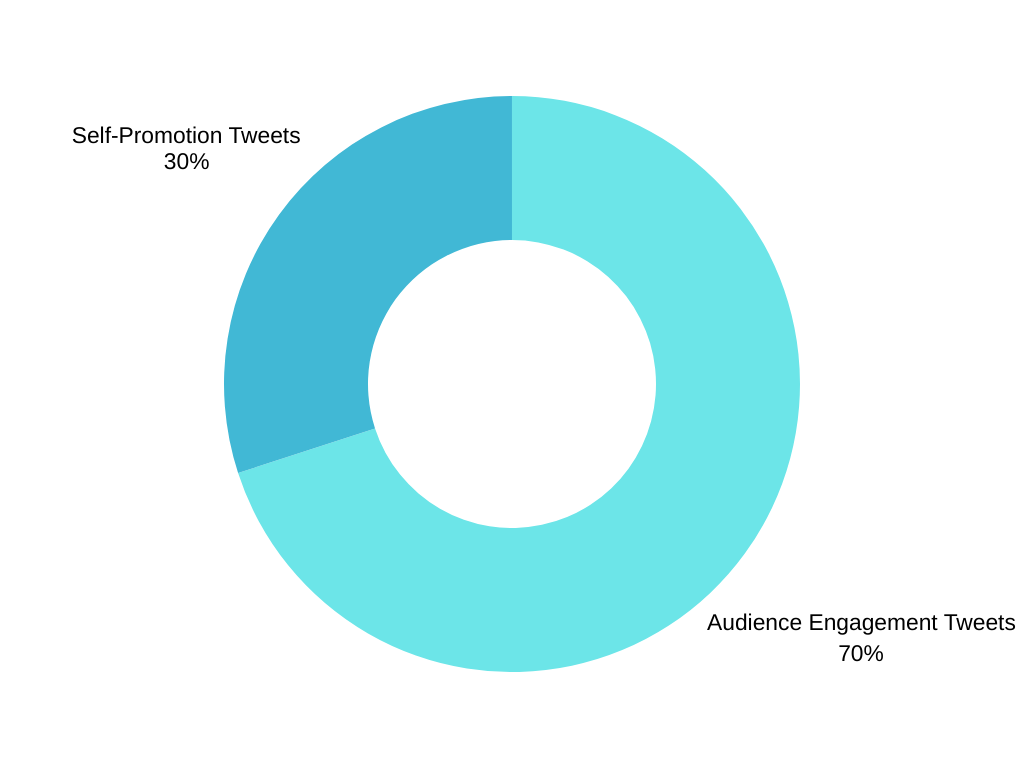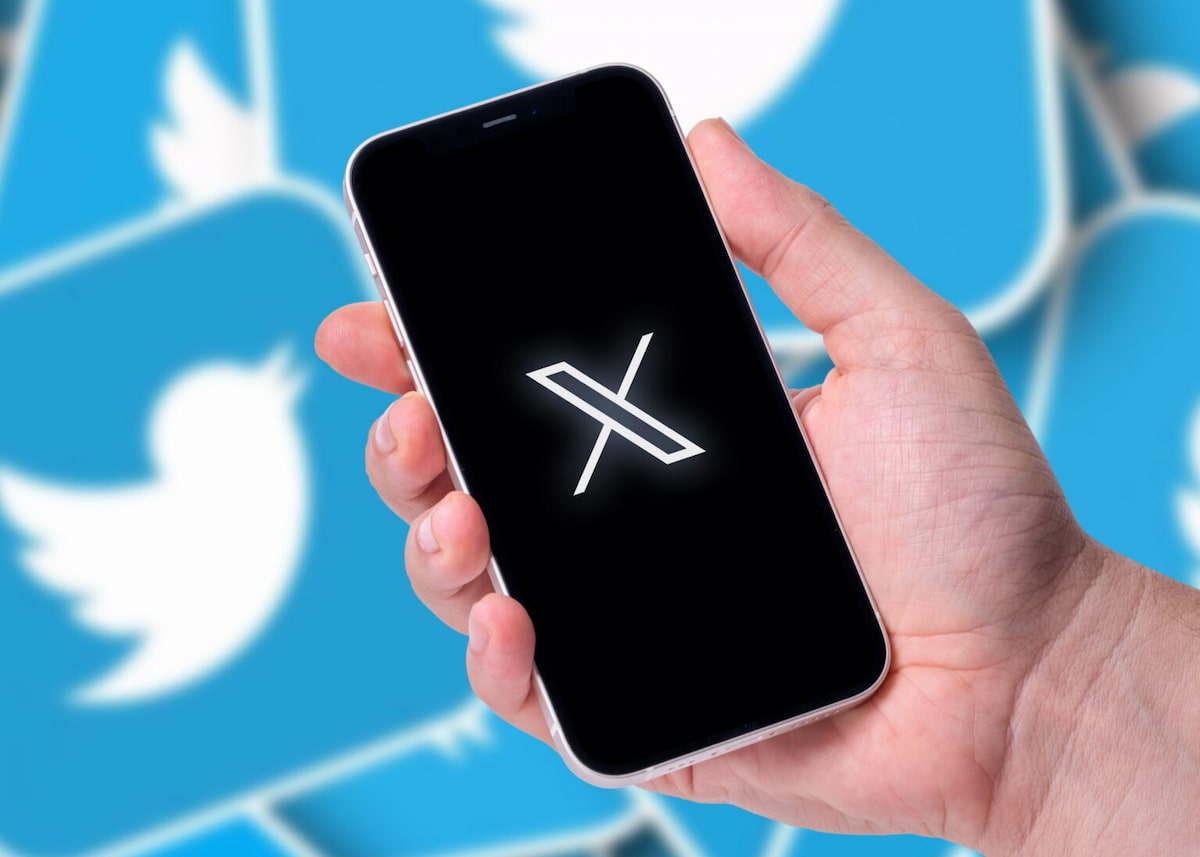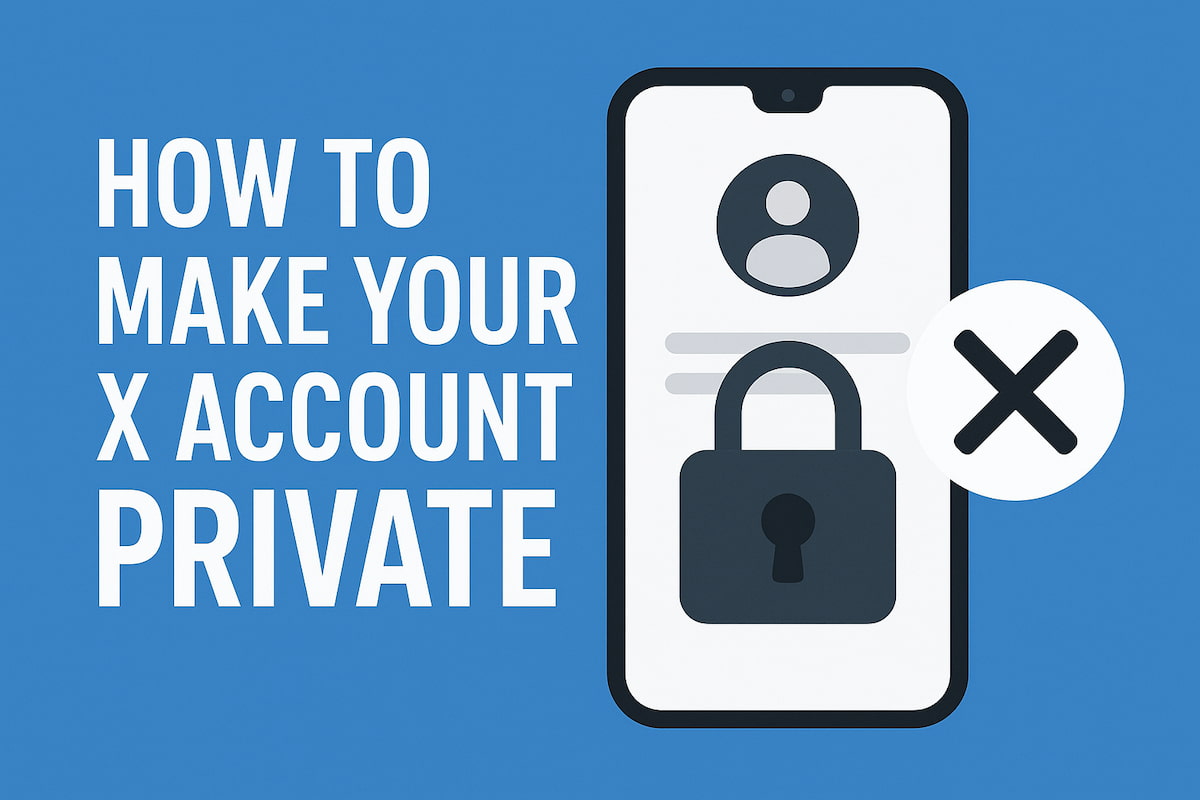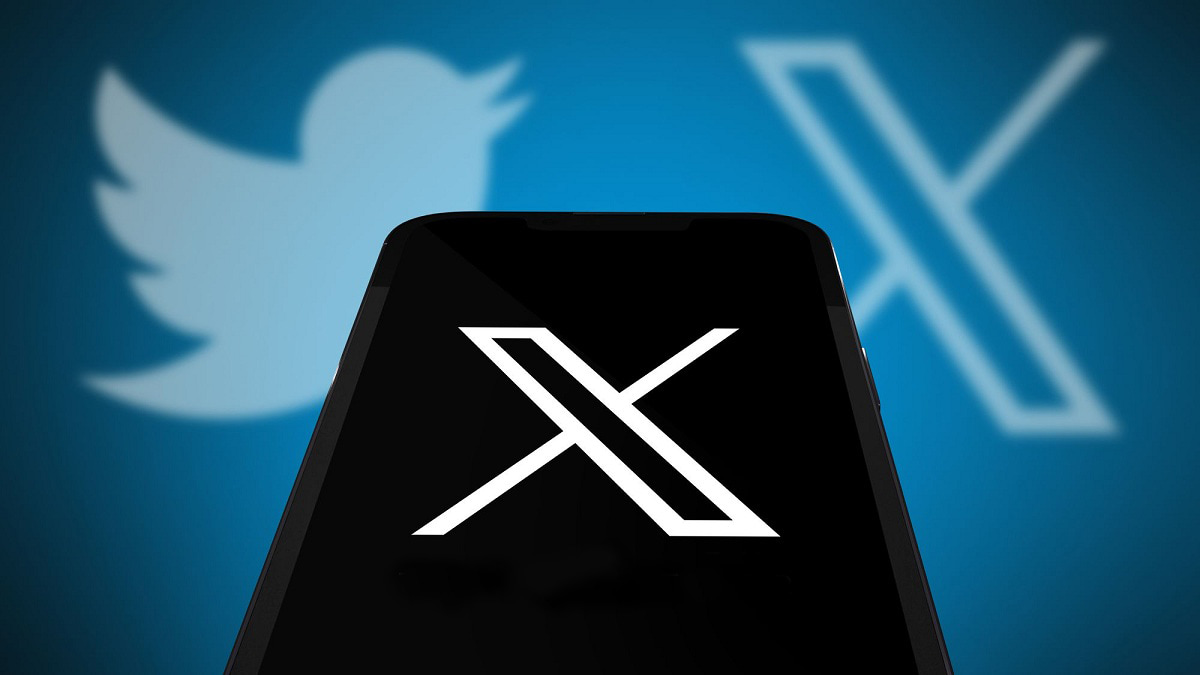Even if you’ve been using Twitter (now X) for business, things change fast, and staying in the loop is key. The platform is always evolving, so it’s important to keep your strategy fresh and up to date.
For B2B marketers, most of the advice out there is often geared toward B2C, which doesn’t always hit the mark for their needs. That’s why we’ve pulled together some practical tips that actually work for Twitter B2B marketing.
From this post, you will learn how you can use X to connect with the right people in your industry, from potential clients to key decision-makers. We’ll also cover how to keep your content relevant and engaging without getting lost in the noise.
Whether you’ve been using Twitter for some years or you’re just figuring it out for your business, we’ve got you covered with tips that can help you get noticed and build connections that matter.
How to Engage B2B Audiences on Twitter?
Talking to a B2B audience on Twitter (or X) can feel like a juggling act. You want to promote your business without spending too much of your startup budget, but you also need to keep people interested, especially when they’re busy marketing their own stuff.
When discussing financial strategies for startups on social platforms, it’s crucial to strike the perfect balance between providing value and maintaining engagement.
Partnering with a B2B digital marketing agency can help refine your messaging, ensuring that your content resonates with your audience while maximizing the impact of your budget.
These agencies understand the nuances of engaging a professional audience and can craft campaigns that blend value-driven content with strategies to boost visibility.
Consider developing a strong eCommerce marketing strategy to boost traffic and increase online sales. Incorporating storytelling elements into your posts can also help humanize your brand and make complex financial concepts more relatable.
Experimenting with different content formats—like polls, short threads, or bite-sized tips—can capture attention and encourage interaction. Don’t underestimate the power of timely responses and thoughtful engagement; they build credibility and foster relationships over time.
Savvy entrepreneurs know that sound financial strategies for startups form the backbone of sustainable growth, making this topic particularly resonant with a B2B audience hungry for practical insights.
In addition to strong messaging and content, having efficient b2b ecommerce solutions in place can enhance the customer journey and drive repeat business. These platforms support streamlined ordering processes, tailored pricing models, and personalized experiences for clients – elements that are crucial when selling to other businesses.
Integrating the best ecommerce merchant services into these systems ensures secure transactions, faster payment processing, and a smoother overall purchasing experience.
When your backend systems align with your social strategy, it creates a smoother path from interest to conversion. This integration builds trust and helps startups scale faster, especially when using AI tools for ecommerce to automate workflows and reduce operational friction.
Engaging a specialized software development company for startups is often critical to ensure these custom backend systems are architected correctly for long-term growth and stability.
Incorporating liveness detection helps ensure only genuine users access forms, demos, and trials.
For service-based industries that depend on precise scheduling and real-time coordination—such as medical transport providers—integrating NEMT software can further streamline customer interactions, automate dispatching, and improve overall operational efficiency.
Adding P2P software to the mix can also simplify how you manage purchasing and vendor payments, making your financial processes more efficient. Moreover, implementing automated invoicing and accounts receivable management through these integrated systems reduces manual errors and accelerates cash flow – a critical factor for startups operating on tight budgets.
The data analytics capabilities built into modern B2B platforms provide invaluable insights into customer purchasing patterns, seasonal trends, and product performance metrics that inform both financial planning and inventory management decisions.
Whether you’re sharing budgeting tips, investment strategies, or bootstrapping success stories, these conversations can transform your feed into a valuable resource hub while establishing your brand as a thought leader in the startup ecosystem.
Financial experts engage their audiences by sharing practical knowledge on trending topics like how to buy Ethereum with Paypal, demonstrating real value before promoting their services.
The key is to weave these financial insights naturally into your content mix, ensuring they complement rather than overwhelm your overall social media narrative.
So how do you keep them engaged without sounding like a broken record?

Here’s a simple rule of thumb: Aim for 70% of your tweets to be useful, and keep the self-promotion to 30%.
In other words, spend most of your time sharing tips, insights, or anything that helps your audience do their job better. The rest? That’s when you talk about your products, share testimonials, or drop a link to your latest blog post.
If needed, a marketing agency can help refine your content strategy, ensuring it reaches the right audience and drives engagement.
For businesses operating in bilingual markets, working with a Montreal marketing agency can provide unique advantages in crafting Twitter strategies that resonate with both English and French-speaking audiences, ensuring cultural nuances are properly addressed in content creation.
A Montreal marketing agency understands the distinct social media behaviors and preferences of Quebec consumers, which can differ significantly from other North American markets in terms of engagement patterns, preferred content types, and optimal posting times.
10 B2B Marketing Tips for X/Twitter
Here’s a breakdown of how to make your tweets actually worth reading:
Share Stuff People Care About
Find and share genuinely helpful content.
If you’re in tech, post a link to a new study or report that your audience will appreciate.
For example, you can add a quick comment like, “Think you’re up to speed on the latest AI trends? Check this recent report from Gartner: [link].”
This is similar to what companies like GE do—they keep their audience engaged by sharing content that’s both relevant and insightful.
Simple, right?
Make It Visual
Let’s be honest, a tweet with just text can be a snooze fest.
Spice things up with images, videos, or even GIFs. Show off a product, share a quick customer success story, or create Twitter video content that delivers a short explainer.
And if you’re using video, consider learning how to add subtitles to your videos to make your content more accessible and attention-grabbing.
Before uploading, use a video compressor to reduce file size without sacrificing quality—this ensures faster loading and smoother playback on all devices.
Visual content grabs eyeballs in a crowded feed where plain text simply scrolls past unnoticed, creating stopping power that can triple your engagement rates overnight.
Using digital signage software can extend this visual impact beyond social platforms by displaying dynamic, branded content in offices, retail spaces, or event environments—helping B2B companies reinforce their message across multiple touchpoints.
The human brain processes images 60,000 times faster than text, making visual tweets the perfect way to communicate complex ideas quickly in our attention-starved digital landscape.
Smart brands are increasingly using custom-designed infographics and behind-the-scenes footage that feel authentic rather than overly polished, creating a genuine connection that followers instinctively trust and engage with.
For example, you can use an AI cartoon generator to create a creative pic or a short vid that highlights a new product or a customer success story, much like Adobe uses visuals to keep people engaged while sharing update.
The evolution of visual content creation has reached new heights with AI-powered tools that enable brands to create on-model visuals showcasing products on diverse body types and in various styling contexts without the expense and logistical complexity of traditional photoshoots.
The ability to create on-model visuals using AI technology has democratized fashion and product marketing, allowing smaller brands to compete with major retailers by generating professional-quality lifestyle imagery that previously required models, photographers, studios, and extensive post-production budgets.
People love visuals, and it makes your tweets way more engaging. Just skip the generic stock photos—use custom visuals that really connect with your brand’s message instead.
Run Some Offers
Just because you’re in B2B doesn’t mean you can’t throw out some deals.
Offer something that actually benefits your audience, like a discount on a service or early access to a webinar. To keep webinars engaging, use the best Google Slides AI tools to enhance visuals and flow.
Here’s an idea of a quick tweet:
“Get 20% off our latest SaaS product! Limited time offer: [link].”
Giving discounts or early access to valuable content is a great way to get people more involved, get more leads and drive them through the DTC funnels.
Just like in those B2B campaigns that mix promotions with content people actually find useful.
Talk About What’s Happening
Keep your finger on the pulse of your industry.
If there’s big news, don’t just retweet it—add your take.
Something like, “What do you think of [Company’s] latest move in AI? Could it change the game? Let’s talk about it.”
Sharing your thoughts on industry news, like Intel does, can help spark engagement and show that your brand is a go-to source for insights.
Jump X Spaces
Twitter’s real strength is real-time conversation. Use it.
If there’s a trending topic in your industry, jump in with your thoughts. For example, you can join X Spaces and start your own.
How do you join a live session?
Once you’re logged in on your phone, tap your profile picture in the top right corner. From there, tap ‘Spaces,’ and you’ll be able to explore live Spaces and even check out upcoming ones. If you’re looking for something specific, just use the Search bar to find it.
Share live updates, respond to others, and show you’re active and in the know.
Join industry-related X chats, share live updates, and connect with peers. Being part of real-time conversations shows you’re active and know your stuff in the industry.
Use Hashtags, But Don’t Overdo It
Hashtags help people find your tweets, but keep them relevant.
Use them strategically to get your content in front of the right people. Look at what hashtags your competitors are using, or do a quick search to find popular ones in your industry.
But don’t just limit yourself to Twitter, consider using LinkedIn scraping tools to gather hashtags they might be using on this platform as well.
When researching these hashtags make sure to use proper workflow documentation to keep track of your research process and findings for future reference.
To get the most out of hashtags on X (Twitter) for B2B marketing, here are some up-to-date options based on 2025 trends:
Business:
- #business: A go-to for reaching a broad business crowd;
- #digitalmarketing: Perfect for content focused on online marketing tactics;
- #entrepreneur and #entrepreneurship: Great for connecting with startups, business leaders, and sharing insights from your entrepreneur journey;
- #smallbusiness and #startup: Essential for tapping into the small business and startup world;
- #finance and #investment: Ideal for engaging with financial pros and business investment discussions.
Marketing:
- #socialmediamarketing: Best for posts on social media strategies;
- #contentmarketing and #SEOtips: Target marketers looking to boost content and SEO;
- #B2Bmarketing: Right on point for B2B-focused strategies;
- #branding: Use this when talking about brand development and strategy.
Tech:
- #technology and #tech: Perfect for general tech topics;
- #AI and #artificialintelligence: Stay in the loop with AI trends;
- #cybersecurity and #innovation: Dive into cutting-edge tech and security talks, including trends like PAM solution adoption for secure access control;
- #coding and #programming: Connect with developers and tech enthusiasts.
Education:
- #edtech: Specifically for education technology;
- #learning and #education: Broad tags for engaging with educators and learners;
- #science and #knowledge: Great for sharing educational content and promoting scientific discussions.
Social Change:
- #socialgood and #EcoFriendly: Perfect for sustainability and corporate responsibility conversations;
- #volunteer and #cause: Great for engaging in social impact and volunteer discussions.
Using these can help you reach the right audience and stay current with your industry trends. Read our guide about twitter hashtag trends to use hashtag more effective for b2b marketing.
Here’s a quick example:
“Excited to share insights at #TechSummit2025! Join the conversation: [link].”
You can also join niche communities to talk shop with others in your industry. It’s not just about visibility; it’s about staying connected with people who matter.
Twitter SEO can also increase your visibility without you spending too much money on it. Nowadays, search happens everywhere, including on Twitter. Optimizing your profile and content for search helps you get discovered without making any extra investments.
Strengthen Your Relationships
Don’t just focus on new followers—make sure you’re engaging with the ones you already have.
Fo example, you can stay connected with your customers by replying to their tweets, just like Dell does with their dedicated support feeds.
Also, if you’ve got a CRM (Customer Relation Management), you can use it to find your customers on X and give them a follow. It’s another way to stay on their radar and build that relationship.
Stay Organized with Lists
Use the search bar to find lists related to your industry.
This gives you a ready-made group of influencers to follow.
Or you can discover new lists.
You can also create private lists of key customers or industry influencers.
Check in on their tweets regularly.
You can also check out the lists that your competitors or industry leaders are following or have created—it’s a great way to discover influencers you might have overlooked.
And if you want to dig even deeper, Twitter tools like BuzzSumo or Followerwonk can help you find the right influencers.
This way, you’ll get a sense of what they’re talking about and what’s important to them, which can spark ideas for your own content.
Partner Up
Start by interacting with other users regularly.
This means more than just liking or retweeting; jump into conversations and offer genuine insights. Industry associations and boards can be valuable for expanding your reach. If they retweet your content, you’re suddenly in front of a much bigger audience.
Tip: Make a list of your brand advocates—the people who frequently share your content. These are the relationships you want to nurture.
Think about collaborating with industry influencers or partnering with complementary businesses.
Working together on content or co-marketing can help you reach new audiences and build credibility naturally, without overcomplicating things.
That’s actually what Northbeam, a platform that uses ML (machine learning) to power advertising attribution, did with their influencer campaign to enhance B2B marketing.
Working together can help you reach a bigger audience and build more credibility.
Lastly, and most importantly, be consistent.
Stick to your brand’s voice, and don’t try to be something you’re not. People appreciate authenticity, and that’s what will keep them coming back for more.
With a mix of helpful content, smart promotions, and active engagement, X can become more than a place for tweets—it can be a real powerhouse for your Twitter marketing strategy.
How to Run B2B Competitions on Twitter?
Competitions in the B2B space aren’t as straightforward as in B2C.
Businesses often need to validate their participation, and not every company can retweet or respond as freely as individual consumers. But that doesn’t mean competitions aren’t effective—it just means you need to tweak your approach.
Remember, the person running the company’s Twitter account might not be the one making the buying decisions. So, think about prizes that would benefit the entire company, not just the individual.
Discounts on your services, access to premium content, or even something as simple as a lunch delivered to the office can go a long way. Anything that makes the person behind the account look good to their boss is a win.
When you run a competition, make sure it ties back to your business goals.
Don’t just give something away for the sake of it. Use the competition to drive traffic to your website, collect email addresses, or get valuable feedback.
Here’s a quick example of how you might format a competition tweet for B2B:
- Existing Customers: “Want 50% off your subscription next month? Here’s how: [link].”
- New Customers: “Sign up for our newsletter, and you could win lunch for your team this Friday! Full details here: [link].”
Tailoring your competition to your audience’s needs can make all the difference.
If you’re struggling to do this on your own, it might be a good idea to use mentoring software and consult with a marketing expert.
How to Review Your X/Twitter Strategy?
No one can be on X 24/7, so setting up monitoring tools is a must. Use tools like Twilert to keep tabs on keywords, hashtags, competitors, and mentions related to your brand.
Set aside a specific time each day to review these alerts and respond promptly. It’s an easy way to stay on top of conversations without being glued to your screen all day.
Engagement doesn’t end with posting. Regularly review your tweets to see what’s working.
Pay attention to what gets the most clicks, retweets, or replies. Twitter’s character limit can make it tricky, but a well-worded tweet can make a huge difference.
Experiment with different formats—ask a question, use a quote, or add a call to action.
For example, instead of just saying, “New post on the Power of Twitter Monitoring: [link],” try something more engaging like, “Want better ROI on X? Learn how monitoring can make a difference: [link].”
Or you can use a stat to grab attention, like, “Did you know 57% of customers use X for business? Find out why monitoring matters: [link].”
Incorporating real-time engagement is key.
Twitter’s strength lies in its ability to connect you with timely conversations. Jump into discussions that matter to your industry and don’t be afraid to start your own. It’s all about showing that your brand is active, informed, and ready to engage.
Final Thoughts
Using Twitter for B2B marketing is first of all about creating connections, staying current, and always refining your approach.
Whether you’re networking, running competitions, or tracking your progress, everything you do on X should move you closer to your business goals.
Keep trying new things, be flexible, and most importantly, keep the conversation alive.





